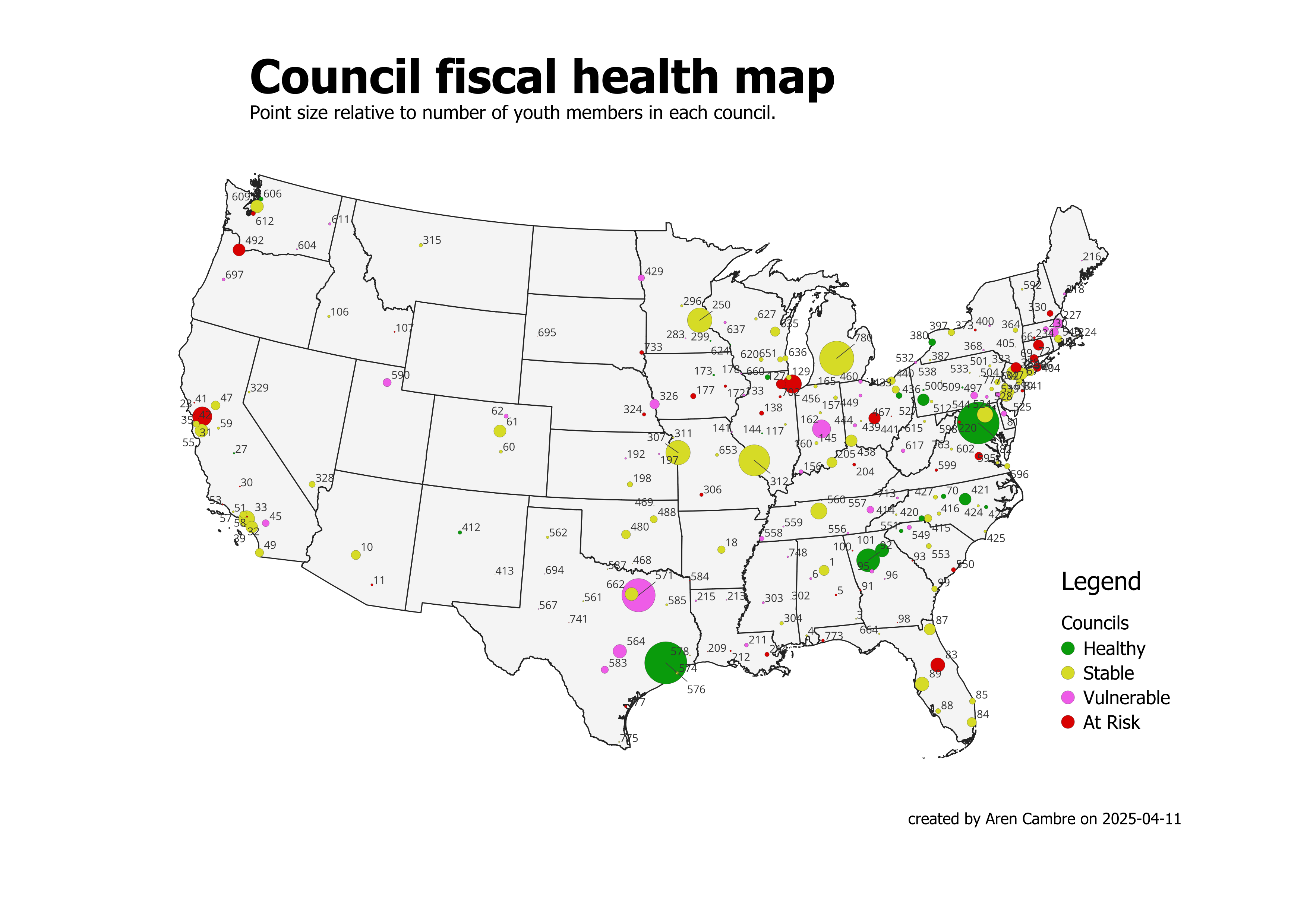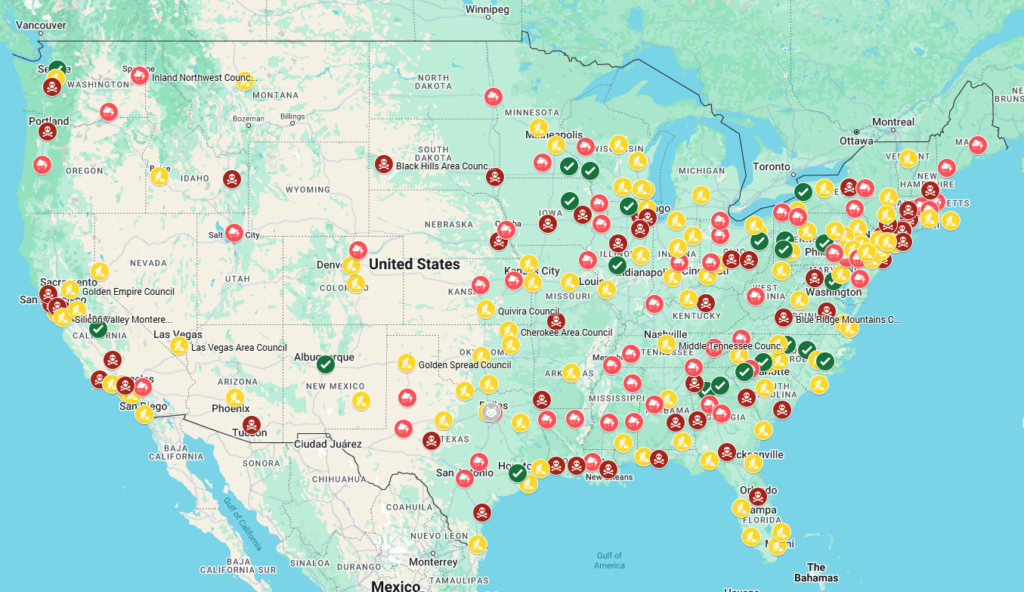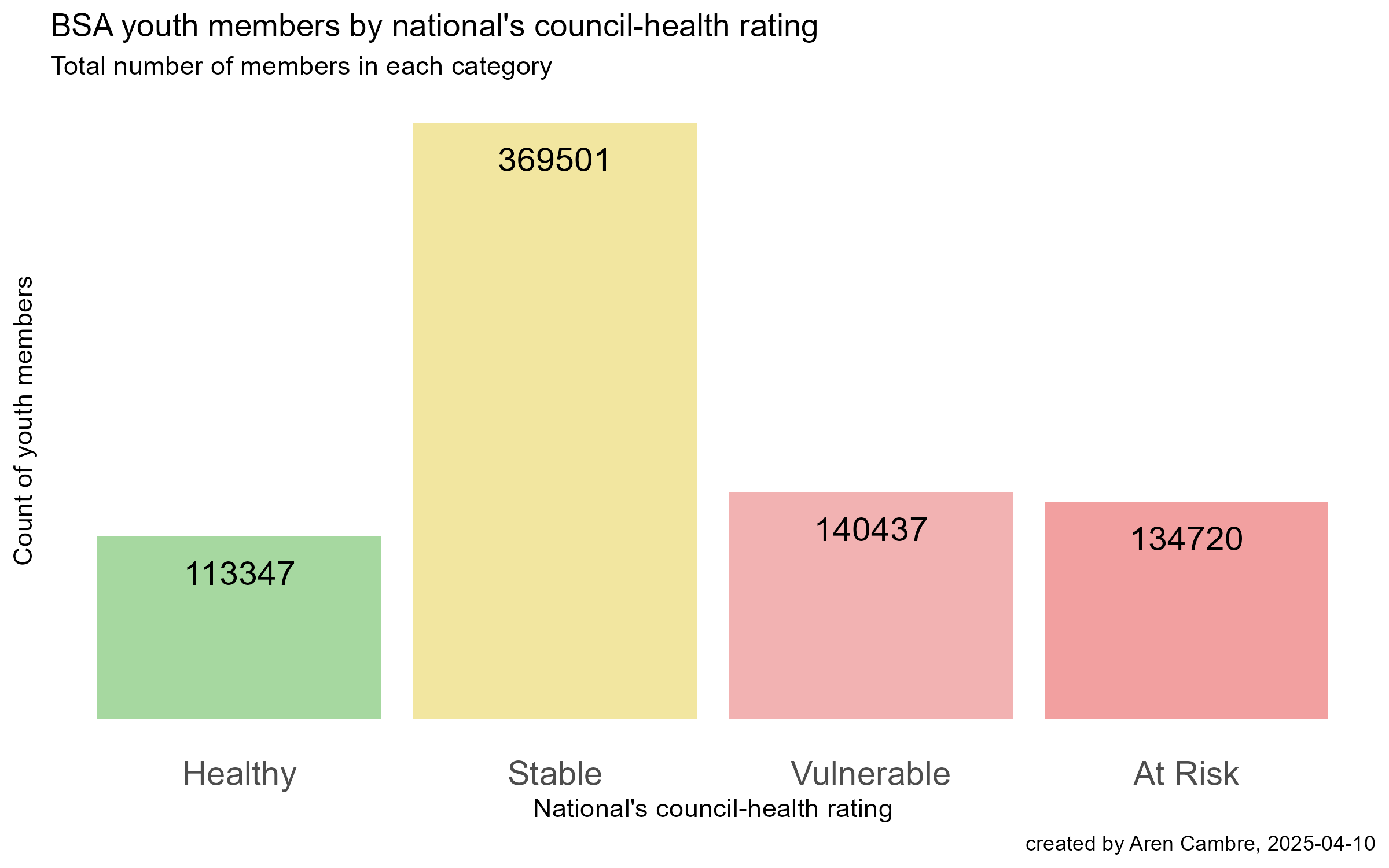Per BSA’s data, 85% of Scouts are in unhealthy councils.
It’s no surprise. We’ve shrunk 84% below our peak youth count, and we’re still shrinking.
This could change with the positive vision in Move Forward: Save Scouting. However, national prefers failure, so it has different priorities like adopting toxic brands, perpetuating cultural theft, appeasing misogynists, attacking adventure, avoiding authentic leadership development, clinging to a money-losing amusement park, worshiping itself, sustaining a good-old-boy career system, scamming Eagle Scouts, infantilizing high schoolers, and attacking those who share feedback.
How councils are ranked
Using their operating margins (short-term and long-term), endowments (scale and growth), and liquidity (cash on hand), BSA classifies councils as:
- Healthy
- Stable
- Vulnerable
- At Risk
Maps
Here’s a static map with points scaled by counts of youth members1 (scroll down for a crosswalk of council numbers to names):

The same data in Google Maps:

We need fewer councils
BSA has 236 councils. This means 236 Scout Executives, bureaucracies, corporations, boards of directors, support infrastructures, and more.
While Girl Scouts USA is not a benchmark, it is a valid comparison. Currently, GSUSA serves its 1.1 million members with 111 councils2, with a mean of just under 10,000 scouts per council.
With 764,651 members across BSA, each of BSA’s 236 councils, on average, serves about 3,200 Scouts.
Compared to GSUSA, BSA has 112% more councils to serve 30% fewer youth. This means lower efficiency and a higher burden of bureaucracy and red tape per Scout. It also means many councils lack the critical mass to have an effective community presence, which hampers fundraising, recognition, and marketing. It’s hard to imagine how this helps deliver Scouting.
Even if we managed to reduce our council count by half, we’d still have 36% fewer Scouts per council than GSUSA.
Underlying data
The underlying data:
- Count from April 2025. ↩︎
- Girl Scouts: Facts and Figures, Girl Scouts USA. ↩︎

Leave a Reply